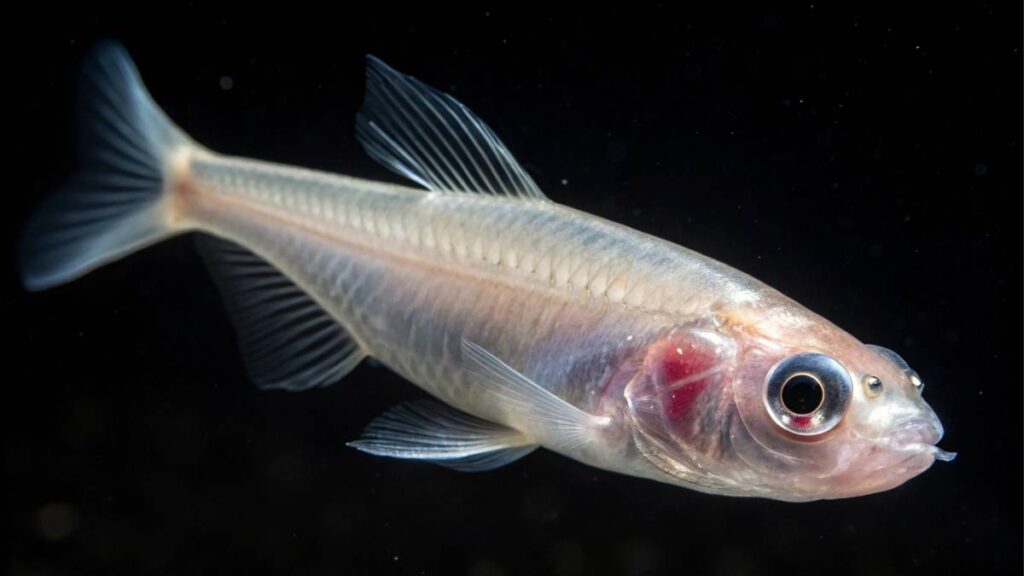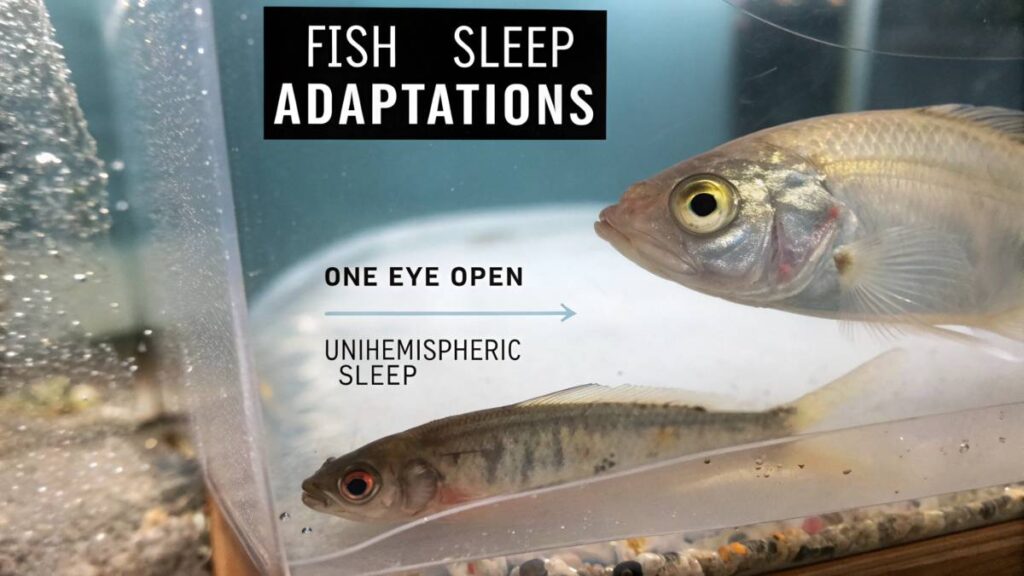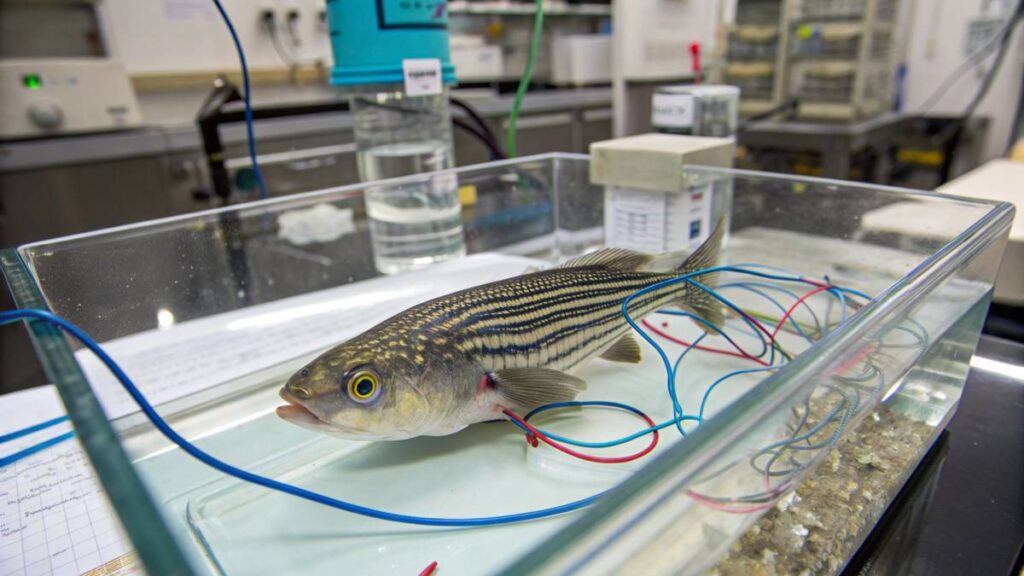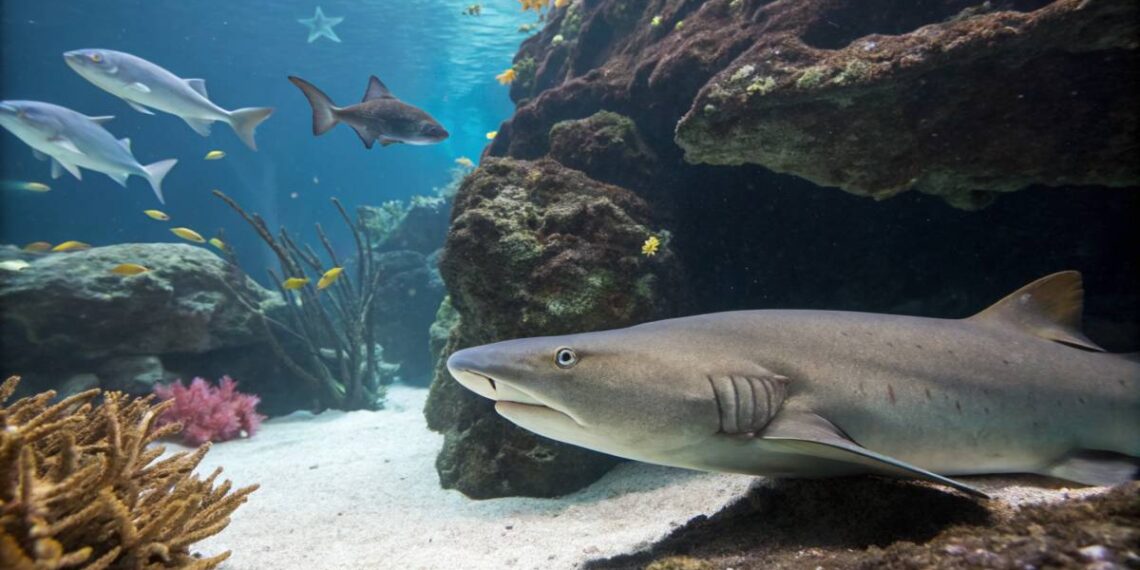Imagine a serene aquarium where fish gracefully glide through the water, yet some seem to vanish into stillness as night falls. Ever wondered if your aquatic companions truly sleep? Fish sleep is a fascinating and intricate behavior that varies across species, environments, and developmental stages. From unihemispheric sleep in sharks to elusive rest states in cavefish, understanding how fish sleep not only deepens our appreciation of these creatures but also informs conservation and welfare practices. Dive into the captivating world of fish sleep and uncover the secrets behind their restful moments.
Key Takeaways
- Diverse Sleep Behaviors: Fish exhibit a range of sleep patterns, including motionless resting, unihemispheric sleep, and species-specific adaptations.
- Environmental Influences: Light-dark cycles, habitat conditions, and predatory pressures significantly impact fish sleep behaviors.
- Developmental Stages: Juvenile fish may not experience sleep until maturity, highlighting the role of growth in sleep patterns.
- Advanced Research Methods: Techniques like EEG, fMRI, and tagging technologies are essential for studying fish sleep in depth.
- Conservation and Welfare: Understanding fish sleep informs habitat protection, sustainable fishing practices, and ethical treatment in captivity.
Understanding Sleep in Fish
Defining Fish Sleep
Fish sleep may not look like what we typically imagine. Unlike humans, fish don’t have eyelids to close, nor do they engage in typical behaviors like yawning or stretching. So, if you’re a fish owner and have ever caught your goldfish floating motionless, you might wonder if it’s sleeping or just playing dead. Defining sleep in fish hinges on their unique behavior and biology. Generally, sleep in fish can be characterized as a state of reduced activity and responsiveness to external stimuli. This isn’t a deep slumber in the sense we understand, but rather a quiescent state that plays a critical role in their overall health and wellness. The essential features of fish sleep include:
- Reduced Movement: Fish tend to stay still or hover in place.
- Altered Reactions: They may not immediately respond to light or other stimuli.
- Variation by Species: Different species exhibit varying sleep behaviors; for example, rockfish might stay near the bottom while others might seek out hiding spots.
Even though fish sleep is subtle, it’s crucial for their biological processes, including growth, healing, and memory consolidation—similar to what happens during our own sleep.

Historical Theories on Fish Sleep
Historically, the question of whether fish actually sleep dates back centuries. For a long time, scientists were met with skepticism regarding the idea of fish sleeping. Their inability to close their eyes raised doubts about whether they entered any state akin to sleep. Early theories posited that fish were always alert to evade predators or find food, rendering the concept of sleep irrelevant. During the 20th century, researchers began to document various behaviors in fish that appeared to align with sleep-like states. For instance, studies noted that during times of low light, many fish would either swim close to the substrate or seek refuge in corals or rock crevices, suggesting they were engaged in some form of rest.However, it wasn’t until the advent of modern technology that deeper understanding emerged. Researchers began leveraging advanced methods that allowed for observation of fish at a neuronal level. This led to new insights into the sleep patterns of various fish species, challenging earlier assumptions and providing evidence for their need for rest.
“Understanding how fish sleep not only unveils their hidden behaviors but also guides us in preserving their natural habitats.” – Dr. Emily Waters
Recent Discoveries
In recent years, the study of fish sleep has exploded, thanks in part to innovative technology and changing scientific perspectives. One key breakthrough favoring this area of research has been the use of scanning techniques that measure brain activity. For example, studies on zebrafish have illuminated two distinct sleep states: “slow bursting sleep” and “propagating wave sleep.” The latter bears some resemblance to REM sleep in humans, showcasing that even without a neocortex, fish still undergo complex sleep states.Highlighted Recent Discoveries in Fish Sleep:
| Discovery | Summary |
|---|---|
| Zebrafish Sleep States | Research indicates zebrafish have unique sleep states akin to REM sleep in mammals. |
| Mexican Blind Cavefish | These fish exhibit an unusual sleep pattern, dozing only 3.5 hours every 24 hours. |
| Sharks Sleeping Behavior | Studies reveal sharks can close their third eyelid while resting, impacting sleep cycle research. |
The Mexican blind cavefish offer another fascinating angle. Living in perpetual darkness, these fish have adapted to life with minimal sleep—contrasting sharply with their surface-dwelling relatives who follow a robust circadian rhythm. This divergence incites curiosity among scientists, as it raises questions about the evolutionary aspects of sleep. Moreover, the common understanding of sleep has shifted to incorporate more nuanced perspectives. Scientists are beginning to see sleep as a spectrum rather than an absolute state. By observing clues in fish behavior—such as less response to stimuli and reduced activity during certain periods—we gain a clearer picture of their resting habits.For anyone interested in fish keeping, it’s vital to recognize these sleep patterns. Understanding when and how fish sleep can help you create a comfortable environment, minimizing disturbances during their rest periods, ultimately supporting their health and general well-being.In conclusion, exploring how fish experience sleep opens a fascinating window into their world. While they may not sleep like us, they possess unique adaptations that allow them to thrive. As research continues to unravel the subtle clues in fish behavior, we’re reminded of the rich complexity of life in all its forms, even those that swim beneath the surface.
This content captures the essence of sleep in fish, engaging readers with science, while being approachable and informative. It seamlessly connects to wider discussions about fish behavior, making it relatable for aquarists and enthusiasts alike.[1][2]
Factors Affecting Fish Sleep Patterns
While the sleep patterns of fish may seem less complex than those of land mammals, they are influenced by various factors that help determine how and when these aquatic creatures rest. In this section, we will explore the environmental influences, behavioral factors, and physiological aspects that play significant roles in shaping how fish sleep.

Environmental Influences
The environment is a critical factor influencing the sleep patterns of fish. From the light conditions in their habitats to the availability of food, external factors can dictate how restful a fish’s sleep is. Here are some key environmental influences:
- Light and Darkness: Many fish species have evolved to follow a rhythm based on the natural light-dark cycle. For example, diurnal fish typically become less active and settle down as the sun sets, while nocturnal species tend to become more active at night. Interestingly, studies have shown that even blind cave fish, which have adapted to live in total darkness, still exhibit circadian rhythms based on environmental cues like food availability.
- Water Currents: Some fish need to maintain movement to breathe. For example, many species can rest by positioning themselves in the flow of water to allow oxygen to be drawn over their gills. As a result, the presence of currents can affect how and where fish choose to sleep. A calm environment may encourage deeper states of rest, while strong currents may force them to stay alert and swim.
- Habitat Structure: The structure of the fish’s environment also plays a role in its sleeping behavior. Coral reef fish might weave in and out of coral to shelter themselves while they rest. Similarly, species like parrotfish secrete a mucus cocoon that not only protects them while they sleep but also masks their scent from predators.
Through these environmental influences, one thing is clear: fish have adapted their sleep behaviors to suit their habitats, maximizing their chances of survival while effectively managing rest.
Behavioral Factors
Behavioral factors are another dimension that affects fish sleep patterns. The social dynamics, feeding habits, and interactions with other species can significantly dictate how fish rest. Here are some notable aspects:
- Social Structure: In many fish species, such as schooling fish, individual behavior during sleep can be influenced by the group’s dynamics. For instance, when separated from their school, some fish may alter their daily activity patterns, becoming nocturnal to reduce predation risk. This change showcases how behavioral cues within social structures can trigger shifts in sleep cycles.
- Feeding Habits: Fish will modify their sleep patterns according to food availability. For example, cave fish increase sleep duration when food is scarce and become more active when food sources are plentiful. This behavioral flexibility ensures they conserve energy when foraging is low, highlighting the profound relationship between feeding behavior and sleep.
- Predation Pressure: The threat of predators is a significant determinant of fish sleep. Many fish species tend to be more vulnerable to attacks during the night, leading them to adopt a more cautious approach when resting. For instance, during the first two hours after sunset, researchers have observed an increase in fish mortality, indicating that many species sleep or rest more during this time, making them easy targets.
These behavioral adaptations emphasize the need for fish to respond to their surroundings and interact socially, creating a nuanced relationship between behavior and sleep.
Physiological Aspects
The physiological characteristics of fish also play an essential role in their sleep patterns. These aspects are intrinsic to the fish and can vary widely among species:
- Unihemispheric Sleep: Some fish can achieve a state known as unihemispheric sleep, where one half of their brain rests while the other half remains active. This adaptation allows them to maintain awareness of their environment while resting. Sharks, for example, can continue to swim slowly while one hemisphere of their brain is asleep, ensuring they stay safe as they catch some z’s.
- Hormonal Regulation: Hormones like melatonin have been shown to regulate the sleep-wake cycles in various fish species, including zebrafish. Melatonin levels typically rise with darkness and drop in response to light, echoing similar patterns found in humans. This hormonal interplay highlights a physiological underpinning for fish sleep that is remarkably similar to higher mammals.
- Sleep Rebound: Like humans, when fish face sleep deprivation, such as during experiments where their sleep is interrupted, they experience a “sleep rebound.” This phenomenon means that after a period of sleep loss, fish will attempt to catch up on lost rest, underscoring the critical importance of sleep for their physiological well-being.
In summary, the interplay of environmental influences, behavioral factors, and physiological aspects shapes the unique and adaptive sleep patterns exhibited by fish. While fish may not sleep like humans, their responses to their surroundings and the internal mechanisms guiding their rest are a testament to the complexity of life beneath the water’s surface. As we broaden our understanding of fish sleep, we gain insights not only into their lives but also the wider implications for animal well-being, ecology, and conservation.The next time you gaze into your aquarium, take a moment to observe your fish. Their resting behavior may be more intricate than meets the eye, influenced by numerous factors interconnected in the fascinating world of aquatic life.[3][4]
How Do Fish Sleep?
As we dive deeper into the fascinating world of fish sleep, it becomes clear that their sleeping habits and behaviors are far from uniform. Just like humans, different fish species exhibit varied sleep patterns, and understanding these differences can help us appreciate the complexity of aquatic life. Let’s explore how fish sleep, highlighting sleep patterns in different species, variations in sleeping behaviors, and delving into the intricacies of their sleep cycles and brain activity.
“The diversity of sleep patterns in fish underscores the remarkable adaptability of aquatic life in the face of environmental challenges.” – Prof. Liam Finley
Sleep Patterns in Different Fish Species
Fish display a wide range of sleep patterns, often based on their environmental adaptations. Here are some notable examples:
- Parrotfish and Wrasse: Many parrotfish and wrasse species are known for their unique approach to sleep. They create a mucous cocoon around themselves before resting, which acts as a protective barrier against parasites and predators. This fascinating behavior can be likened to a sleeping bag or mosquito net, ensuring their safety while they slumber. Next time you dive, keep an eye out for these little sleeping bags nestled in coral reefs!
- Sharks: Some sharks exhibit a form of unihemispheric sleep, allowing one hemisphere of their brain to rest while the other remains alert. This adaptation is vital for maintaining essential functions such as swimming and breathing. For example, species like the hammerhead shark can keep swimming, never fully succumbing to restful sleep like a land mammal.
- Cavefish: An intriguing case is found in the Mexican blind cavefish, which has adapted to a life where sleep needs may be significantly reduced. Studies have shown they experience unique sleep disturbances due to their dark environment and limited stimuli. Such adaptations raise questions about the interplay between sleep and environmental factors.

Fish species boast diverse sleeping habits tailored to their survival, each crafted over generations to fit their unique homes.
Variations in Sleeping Behaviors
The variations in sleeping behaviors across species illuminate how fish adapt their resting habits to their behaviors and habitats:
- Hiding Habits: Most fish typically rest at the bottom of their tanks or in natural habitats, often tail down or tucked into crevices and caves to evade potential predators. Species like the wrasse will retreat to protective places when they rest, giving them a sense of security.
- Active During Sleep: Some species don’t completely stop their movements while “sleeping.” For instance, fish use a gentle fin movement to facilitate breathing while remaining still. This behavior can lead to a relaxed but still aware state, making them susceptible to wakefulness at the first sign of danger.
- Cues to Sleep: Fish often rest during the night, taking cues from their environment, including light and darkness. Disruptions to their natural light-dark cycle can lead to longer sleep periods, similar to humans catching up on lost rest from a tired night.
These behavioral adaptations reflect a deep connection between the fish and their surroundings. Allowing them to maximize safety and energy efficiency while managing their essential need for rest.
Sleep Cycles and Brain Activity
Fish sleep cycles, while different from those in mammals, can be traced through their brain activity. Modern research has enabled scientists to study this phenomenon extensively:
- Electroencephalogram (EEG) Findings: Fish, particularly zebrafish, have been observed displaying unique brainwave patterns that resemble those of sleep in mammals. Although they lack a neocortex, the regions of the brain associated with sleep regulation are present, indicating that fish experience sleep-like states.
- Circadian Rhythms: Many fish have circadian rhythms that mirror our own, with variations depending on species and environmental needs. For example, zebrafish have demonstrated distinct stages of sleep that parallel human REM and slow-wave sleep. These stages are crucial for memory consolidation, cellular repair, and overall physiological health.
- Sleep Deprivation: Just as humans can suffer from sleep deprivation, fish display similar vulnerability. Studies show that after experiencing sleep loss, zebrafish exhibit a “sleep rebound,” where they catch up on missed rest. Prolonged sleep disruptions in fish can lead to detrimental effects on their cognitive functioning and behaviors, emphasizing the importance of rest for aquatic life.
| Species | Sleeping Behavior | Adaptations |
|---|---|---|
| Parrotfish | Form mucus cocoon | Protects from predators and parasites |
| Zebrafish | Experience sleep-like states with brainwaves | Distinct sleep stages observed |
| Sharks | Unihemispheric sleep | Allows for breathing while resting |
| Cavefish | Reduced sleep needs in dark environments | Adapted to survive in low-stimuli settings |
In conclusion, the study of how fish sleep opens a captivating window into their behavior and adaptations. From creating protective mucus cocoons to exhibiting unihemispheric sleep, fish have adapted their resting patterns in unique ways, demonstrating the complex interplay between their biology and environment. Next time you gaze into an aquarium or observe fish in their natural habitat, consider their sleeping habits; it’s just as intricate as the labyrinth of their aquatic world. Understanding fish sleep is not just a scientific curiosity but also a window into the essential balance of life and survival in our oceans and waterways.[5][6]
Do All Fish Sleep?
As we’ve navigated through the intriguing world of fish sleep, you may find yourself pondering whether all fish experience this essential biological function. The simple answer is: not necessarily. While many fish do exhibit sleep-like states, some species display unconventional patterns or may not sleep at all. Let’s delve deeper into the fascinating nature of fish sleep, exploring those that exhibit unique sleeping behaviors and the potential reasons for their lack of traditional sleep.
Fish Species That Exhibit Unconventional Sleep Patterns
When it comes to sleep patterns, the diversity among fish species is astonishing. Some fish have adapted remarkable strategies to survive in their environments, leading to unconventional sleeping behaviors. Here are a few standout examples:
- Nocturnal Fish: Certain fish species, like catfish and some loaches, are primarily nocturnal. They spend their days hidden away in caves or beneath debris to avoid predators, emerging only during the cover of darkness to hunt for food. This adaptation can give the impression that they don’t sleep, when, in reality, they are simply resting in a different timeframe than most aquarium fish.
- Cavefish: Some populations of the Mexican blind cavefish have been observed to exhibit little to no sleep. Living in total darkness, these fish experience a significant reduction in the stimuli that typically regulate sleep-wake cycles. As a result, without cues to indicate day from night, even the fish’s circadian rhythms seem to be disrupted, making prolonged sleep periods virtually nonexistent.
- Sharks and Rays: Contrary to what one might expect, many sharks maintain a unique form of sleep known as unihemispheric sleep, where one hemisphere of the brain sleeps while the other remains awake. This adaptation allows them to patrol for food and stay aware of their surroundings while still resting. Sharks typically need to keep moving to ensure proper water flow over their gills for oxygen intake—thus, they never fully “sleep” in the way most other animals do.
- Fish that Don’t Sleep Until Maturity: In some cases, juvenile fish, such as Tilapia, may not experience sleep until they reach a certain age—typically around 5 to 6 months. Until then, their sleeping patterns seem to remain underdeveloped or even nonexistent, highlighting a fascinating aspect of their growth and development.
These examples illustrate that while many fish do enjoy restful periods, not all species follow a typical sleep structure, and each species has adapted its behavior uniquely based on environmental pressures.

Potential Reasons for Lack of Sleep in Certain Fish
Understanding why some fish engage in unconventional sleep behaviors often comes down to survival strategies. Here are a few potential reasons for the lack of sleep or altered sleeping patterns in specific fish species:
- Adaptation to Environment Over Time: Fish have evolved to fit their specific habitats, and these adaptations can impact their sleep. For example, cave fish have adjusted to live in complete darkness for extended periods, leading to changes in their biological clock and the absence of consistent sleep. Other species living in high-predation areas may forego sleep altogether to evade threats, heightening their alertness.
- Predatory Pressures: In certain species, a lack of traditional sleep can be a direct response to predation risks. By remaining vigilant and partially awake, these fish can effectively escape from potential threats. The trade-off for safety often means reduced rest, leading to energy depletion over long periods.
- Parental Duties: Fish that exhibit parental care—like tilapias—often put sleep on hold to ensure the safety and survival of their offspring. During these crucial periods, they remain vigilant against threats, often neglecting their own resting needs.
- Migration: Wild fish that migrate for spawning or feeding can experience significant sleep disruptions. Through long transfers across various bodies of water, sleep is sacrificed to reach necessary locations, resulting in a temporary lack of rest.
In summary, the nature of fish sleep varies significantly across species, and while many fish do enter resting states, conditions surrounding their habitat and lifestyles can lead some to forego traditional sleep patterns. Understanding these distinctions enhances our knowledge of fish biology and ecology—important factors as we examine aquatic environments and work towards fish conservation.Next time you observe your fish, remember that their sleeping habits might reflect deeper environmental and biological narratives. Each journey in understanding fish sleep unveils a little more of the vast, intricate relationships at work beneath the surface of our oceans иnd rivers. By appreciating these nuances, we contribute to a broader dialogue about the importance of safeguarding the rich biodiversity in our waters.[7][8]
Implications and Significance
Understanding fish sleep is more than just a scientific curiosity; it offers critical insights into their biology, behavior, and welfare, as well as informing conservation efforts. As we explore the implications and significance of this topic, we will look at it from an evolutionary perspective, the importance of studying fish sleep, and considerations for conservation and welfare.
Evolutionary Perspective on Fish Sleep
From an evolutionary standpoint, the sleep patterns of fish can shed light on how these creatures have adapted to life in aquatic environments. As the most diverse vertebrate group on the planet, fish have developed a myriad of sleep strategies, reflecting their evolutionary heritage and ecological niches.
- Adaptation to Environment: The adaptation of fish sleep patterns is a fascinating example of natural selection at work. For instance, species like sharks exhibit unihemispheric sleep, allowing them to maintain awareness of their surroundings while resting. This evolutionary feature is essential for survival in the predatorial waters they inhabit.
- Common Ancestry and Divergence: By examining sleep-like behaviors across various fish species, scientists can trace back common ancestral traits. Understanding these evolutionary frameworks ties fish behavior to broader trends seen in other animal groups, furthering our comprehension of sleep’s origins. For example, the similarities in brain patterns during sleep across species hint at underlying evolutionary mechanisms that govern sleep functions.
- Insight into Sleep Evolution: Investigating sleep in fish could lead to broader insights into sleep across the animal kingdom. By comparing the sleep patterns of fish with those of mammals and birds, researchers can highlight the diverse adaptations that have emerged in response to different environmental pressures and survival needs.
Understanding evolution not only helps us appreciate fish as unique beings but also allows us to see the intricate web of interactions that tie their sleeping habits to ecological processes.

Importance of Studying Fish Sleep
Researching fish sleep presents multiple benefits, ranging from improving our appreciation of aquatic life to practical applications for management and conservation:
- Cognitive and Behavioral Insights: Studying how fish rest and recover can provide invaluable information about their cognitive abilities and sensory perceptions. For instance, findings suggest that fish, like zebrafish, experience distinct sleep-like states akin to REM sleep. Understanding these cognitive processes could inform how we assess fish intelligence and behaviors.
- Advancements in Aquaculture: Knowledge of fish sleep can help optimize conditions in aquaculture settings. Recognizing that fish require rest for both health and well-being can guide the design of more humane facilities. Providing adequate cover and reducing disturbances can promote better sleep for fish in captivity, leading to improved growth rates and lower stress levels.
- Fostering Research Collaboration: Continued research into fish sleep promotes interdisciplinary collaborations among marine biologists, ecologists, and behavioral scientists. This shared pursuit of knowledge strengthens the scientific community’s ability to understand and address critical challenges related to fish populations and ecosystems.
By recognizing the importance of studying fish sleep, we not only deepen our understanding of these fascinating creatures but also provide a more compassionate framework for their care and management.
Conservation and Welfare Considerations
The implications of understanding fish sleep extend into conservation efforts and welfare considerations, underscoring the necessity of respecting their natural behaviors:
- Health and Well-being: Sleep plays a vital role in regulating vital physiological processes, including immune function and metabolism. A comprehensive understanding of fish sleep can inform conservation strategies that ensure adequate rest and recovery time, promoting overall health within fish populations.
- Sustainable Fishing Practices: Information about the sleep patterns of fish can influence fishing regulations, ensuring practices that minimize sleep disturbances during peak spawning seasons or critical rest periods. By managing fishing quotas and seasons based on fish behavioral cycles, we can support the sustainability of fish populations and their habitats.
- Habitat Protection: Understanding fish sleep patterns also emphasizes the importance of preserving natural habitats. Ensuring that fish have access to safe resting areas free from pollution and disturbances fosters better sleep, which is essential for their health and reproductive success.
- Welfare in Captivity: As we explore the implications of fish sleep, the ethical dimension of fish welfare must be at the forefront. In aquaculture and aquarium settings, providing environments that mimic natural conditions will allow fish to exhibit behaviors that promote genuine sleep. This requires understanding their specific needs and ensuring that their biological rhythms are respected.
In conclusion, investigating fish sleep broadens our comprehension of their biology while also highlighting essential conservation and welfare considerations. By bridging scientific knowledge and practical applications, we can foster a more compassionate approach to understanding and preserving aquatic life. As research continues to unveil the mysteries of fish sleep, we pave the way for informed policies and practices that promote the well-being of these extraordinary creatures, ensuring their survival in a rapidly changing world.[9][10]
Practical Observations and Research Techniques
As we step into the world of observing fish sleep, it becomes apparent that the methods used to study this unique phenomenon are just as varied as the fish themselves. From casual, practical observations to advanced scientific techniques, researchers have developed numerous ways to gain insights into the sleeping habits of fish. Let’s explore how we can observe fish sleep in both captivity and the wild, delve into advanced research methods, and discuss the challenges faced in studying sleep in these aquatic creatures.
Observing Fish Sleep in Captivity
For aquarium enthusiasts and researchers alike, monitoring fish sleep behavior in captivity offers a remarkable opportunity to learn about these captivating animals. Here are some practical tips for observing sleep behaviors:
- Watch for Stillness: When fish are resting, they typically exhibit significantly reduced movement. In an aquarium, this can mean lying still at the bottom or hiding in their favorite spot. A fish that appears motionless for an extended period is likely in a sleep-like state.
- Timing is Key: The light-dark cycles you establish in your fish tank can significantly impact your fish’s sleep patterns. Most tropical and freshwater fish are diurnal, meaning they are most active during the day. Observing your fish during the transition from light to dark can help you identify when they start to settle down.
- Monitor Response to Stimuli: Sleeping fish may not react promptly to external stimuli. If your fish does not immediately respond to feeding or tapping on the tank, it may be experiencing a short rest.
- Document Behavioral Patterns: Keeping a journal of your observations can help you recognize the individual sleep behaviors of your fish species, identify unique patterns, and track changes over time. For instance, you might notice that certain species take longer naps after days of being kept awake.
Overall, simply observing at the right time with patience can yield fascinating insights into the sleep behaviors of your aquatic companions.
Advanced Methods for Studying Fish Sleep
While practical observations can be quite insightful, researchers are increasingly relying on advanced methods to study fish sleep more thoroughly. Here are some of the groundbreaking techniques that have led to significant discoveries in our understanding of fish sleep patterns:
- Electrophysiology and EEG: Electroencephalogram (EEG) studies have been instrumental in identifying sleep patterns in fish. By placing electrodes on the fish’s head, researchers can monitor brain activity during rest, identifying sleep-like patterns similar to those observed in mammals. This technique has been particularly effective in studying zebrafish due to their translucent skin, making it easier to visualize changes in brain activity without disturbing them.
- Functional Imaging: Advanced imaging techniques, such as functional magnetic resonance imaging (fMRI), have been applied to monitor brain activity in fish. By observing changes in blood flow and brain connectivity during sleep-like states, researchers gain insights into the underlying mechanisms governing sleep in fish.
- Tagging and Tracking Technologies: Using non-invasive tags and underwater observation systems allows researchers to track the behavior and sleep patterns of fish in their natural habitats. These technologies enable scientists to study fish sleep in various environmental conditions and behavioral contexts.
- Hormonal Analysis: Researchers are increasingly examining the role of hormones in regulating fish sleep. Studies have focused on hormones like melatonin, which influences sleep-wake cycles in various species. Understanding these hormonal mechanisms offers critical insights into how fish sleep is regulated.
These advanced techniques contribute a wealth of knowledge about fish sleep that enhances our comprehension of their biology, behavior, and ecological relationships.
Challenges in Sleep Research on Fish
Despite the advances in methodology, studying fish sleep poses several challenges that researchers must overcome:
- Lack of Clear Sleep Indicators: Fish do not have eyelids, making it difficult to identify traditional signs of sleep such as closed eyes. This lack of obvious sleep cues complicates observational studies, often leading to uncertainty about whether fish are truly asleep or merely resting.
- Environmental Variables: Fish habitats are diverse and can vary significantly between individual species. These environmental factors, such as light conditions, water flow, and habitat structure, can affect fish sleeping behavior, making it necessary to control or account for these variables during research.
- Behavioral Flexibility: Fish exhibit remarkable behavioral flexibility, often adjusting their sleep patterns based on environmental pressures, social interactions, or reproductive cycles. This adaptability can complicate the interpretation of results from studies, as observed behaviors may not always reflect typical sleep states.
- Ethical Considerations: Invasive study methods can stress fish and lead to altered behaviors not representative of their normal sleeping patterns. This raises ethical questions about the best practices for researching fish sleep without causing undue harm.
In summary, while fish sleep research offers promising avenues for discovery and understanding, the challenges faced by scientists necessitate a careful balance of innovative methodologies and ethical considerations. With continued exploration, both researchers and enthusiasts will gain valuable insights into the aquatic world’s complexities, leading to a better appreciation of the sleep behaviors of our finned friends.As we stand on the threshold of understanding the wonders of fish sleep, both practical observations and advanced research techniques play crucial roles. Together, they promise to unlock further mysteries in the aquatic realm, enhancing our knowledge of fish and their incredible adaptations beneath the waves.[11][12]
Main Tips
- Observe Carefully: Spend time monitoring your aquarium to identify when and how fish rest, noting any unique behaviors.
- Maintain Light-Dark Cycles: Establish consistent lighting schedules to regulate your fish’s sleep patterns and overall health.
- Provide Safe Hiding Spots: Ensure your aquarium has ample hiding places where fish can feel secure and rest undisturbed.
- Monitor Environment: Keep the tank environment stable, minimizing sudden changes that could disrupt your fish’s sleep.
- Use Advanced Tools: Consider utilizing tools like underwater cameras or monitoring systems to study sleep behaviors without interfering.
Conclusion
Exploring the realm of fish sleep reveals a complex tapestry of behaviors shaped by evolution, environment, and survival needs. From the unihemispheric rest of sharks to the elusive sleep patterns of cavefish, each species adapts uniquely to its habitat. Advanced research methods, such as electrophysiology and functional imaging, have unlocked deeper insights into the sleep-like states of fish, bridging gaps in our understanding of aquatic biology. Moreover, recognizing the importance of sleep in fish emphasizes the need for thoughtful conservation strategies and ethical practices in both wild and captive settings. As we continue to unravel the mysteries of how fish rest and recover, we not only enhance our scientific knowledge but also ensure the well-being of these extraordinary aquatic beings. Embracing these insights fosters a more compassionate and informed approach to managing and preserving our underwater ecosystems.
FAQs
Do all fish species sleep?
No, not all fish species sleep in the traditional sense. While many exhibit sleep-like states, some, like certain sharks, engage in unihemispheric sleep, and others may not sleep until reaching maturity.
What is unihemispheric sleep in fish?
Unihemispheric sleep is a unique sleep pattern where one hemisphere of the brain rests while the other remains active, allowing fish like sharks to stay vigilant and continue swimming.
How do light-dark cycles affect fish sleep?
Light-dark cycles influence the sleep patterns of most diurnal fish. Establishing these cycles in aquariums helps regulate their activity and resting periods, ensuring healthy sleep behaviors.
Why don’t some juvenile fish experience sleep?
Juvenile fish, such as Tilapia, may not experience sleep until they reach maturity. Their sleep patterns develop as they grow, highlighting the role of growth in establishing restful behaviors.
What methods are used to study fish sleep?
Researchers use advanced techniques like electrophysiology, EEG, functional imaging, tagging, and tracking technologies to study and understand fish sleep patterns in both captivity and natural habitats.
Resources
- Unihemispheric Sleep in Sharks – National Geographic
- Advanced Techniques in Fish Sleep Research – ScienceDirect
- Ethical Considerations for Fish in Aquariums – Humane Society
Final Thoughts
Delving into the sleep behaviors of fish opens a fascinating window into their lives and adaptations. From the graceful stillness of fish in aquariums to the sophisticated unihemispheric sleep of sharks, each pattern reveals how these creatures navigate their environments and ensure survival. Advanced research techniques have been pivotal in uncovering these behaviors, allowing scientists to monitor and understand fish sleep in unprecedented detail. Moreover, recognizing the significance of sleep in fish underscores the importance of preserving their natural habitats and ensuring ethical practices in captivity. As we continue to explore and appreciate the complexities of fish sleep, we not only enrich our scientific knowledge but also foster a deeper respect for the intricate balance of aquatic ecosystems. Embracing these insights is essential for the sustainable management and conservation of our precious underwater worlds.
Recommended Products
- Aqueon Aquarium Heater – Maintain optimal water temperatures for healthy fish sleep patterns
- Marineland LED Aquarium Lighting – Provide consistent light-dark cycles to regulate fish sleep
- Fluval Specialty Aquarium Plants – Create natural hiding spots for fish to rest comfortably.








